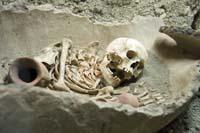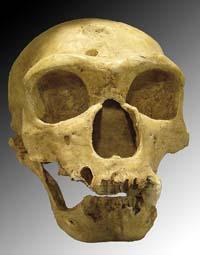“We have to be open to the study of South Iberia’s Neanderthals”
2013/02/21 Roa Zubia, Guillermo - Elhuyar Zientzia Iturria: Elhuyar aldizkaria

The main criticism of your work is that you have analyzed few deposits.
We have only been able to date bones of very high places, of cold climates: The deposits of Jarama VI and Zafarraya. And people say the Neanderthals probably lasted longer on the coast. Therefore, through our technique we could not study the last Neanderthals.
However, where it is possible to apply the technique, the result is always that fossils are older than expected. Is it possible to extrapolate this effect to warm climate deposits?
Yes, and that is the main conclusion of our article. For at least ten years we have known that traditional fossil cleaning methods do not completely decontaminate new carbon pollution in all cases. Sometimes the radiocarbon dating of the Pleistocene made with this method is correct and in others not. In southern Iberia, the difference between the results of the traditional acid-base-acid method and our ultrafiltration method is surprising: almost 20,000 years. We believe this is because organic matter is not well preserved in the whole environment. The first research carried out in Jarama VI, Madrid, and in Zafarraya, Granada, consisted in considering reliable samples and dating that would not normally be considered reliable, since it was only about dating. And, in principle, since conservation problems are much greater, it is expected that the dating of coastal deposits will be worse than those of mountain samples. However, we cannot say that all coastal dating is wrong. We can say that these chronologies must be reviewed.
Your dates are at least 45,000 years old. Did the last Neanderthals not live in southern Iberia?
We say that we have no chronological evidence of the presence of the last Neanderthals in southern Iberia. Perhaps they were there: lack of evidence is not evidence of lack. In my opinion, the conclusion of our research is that we have to be open in analyzing what happened in southern Iberia: perhaps they were the last Neanderthals there, perhaps they were modern human beings, and perhaps in the last Neanderthals there was no human being in that place. It may also be that in many records the sediment that interests us is missing.

Gai honi buruzko eduki gehiago
Elhuyarrek garatutako teknologia






